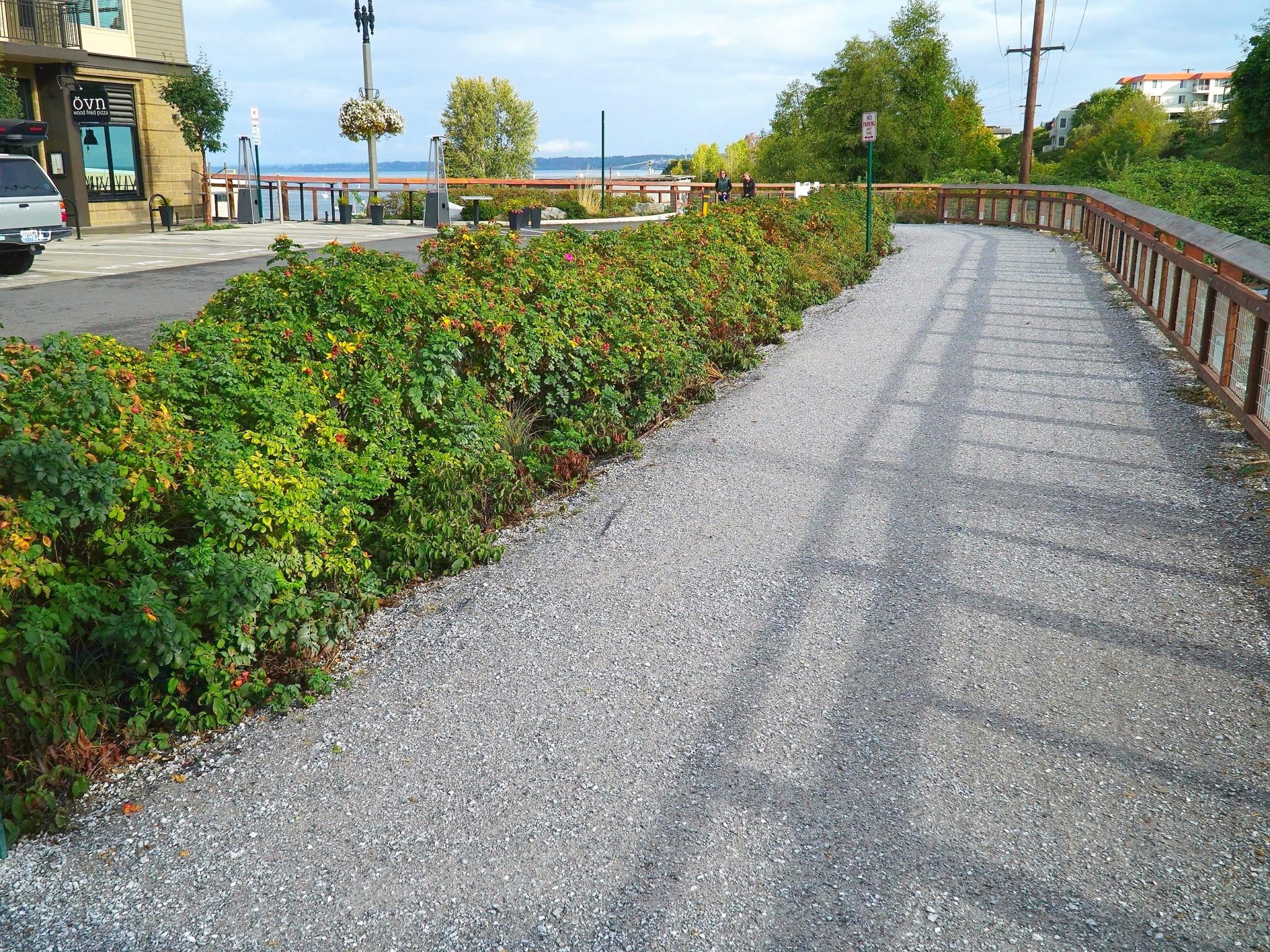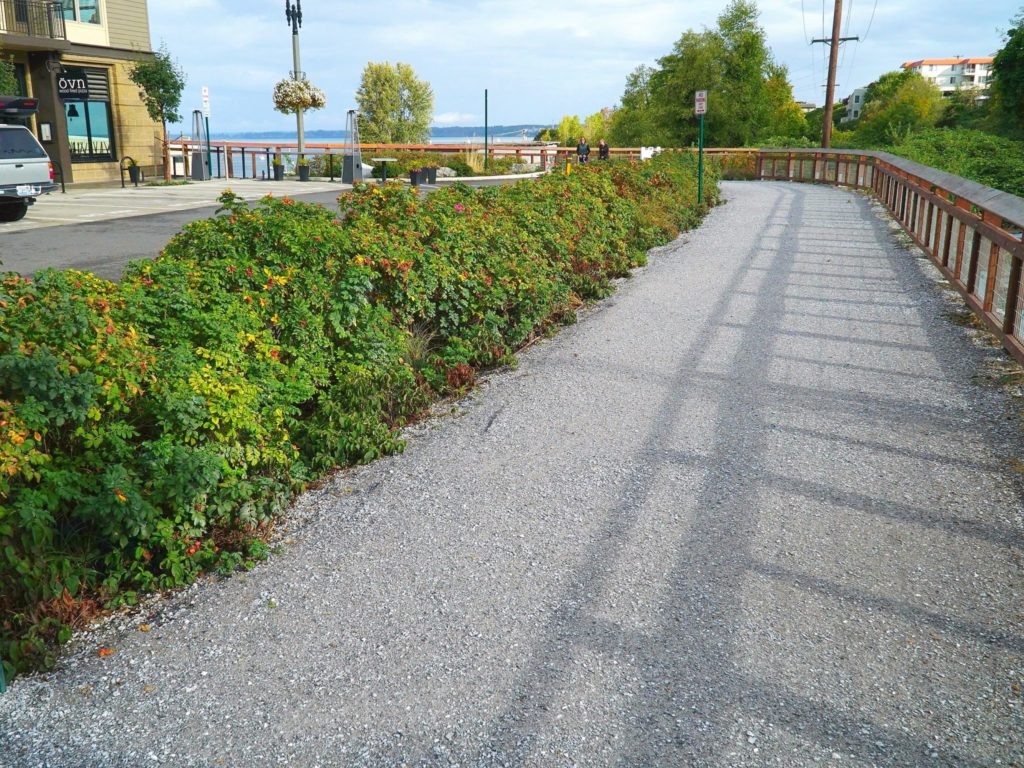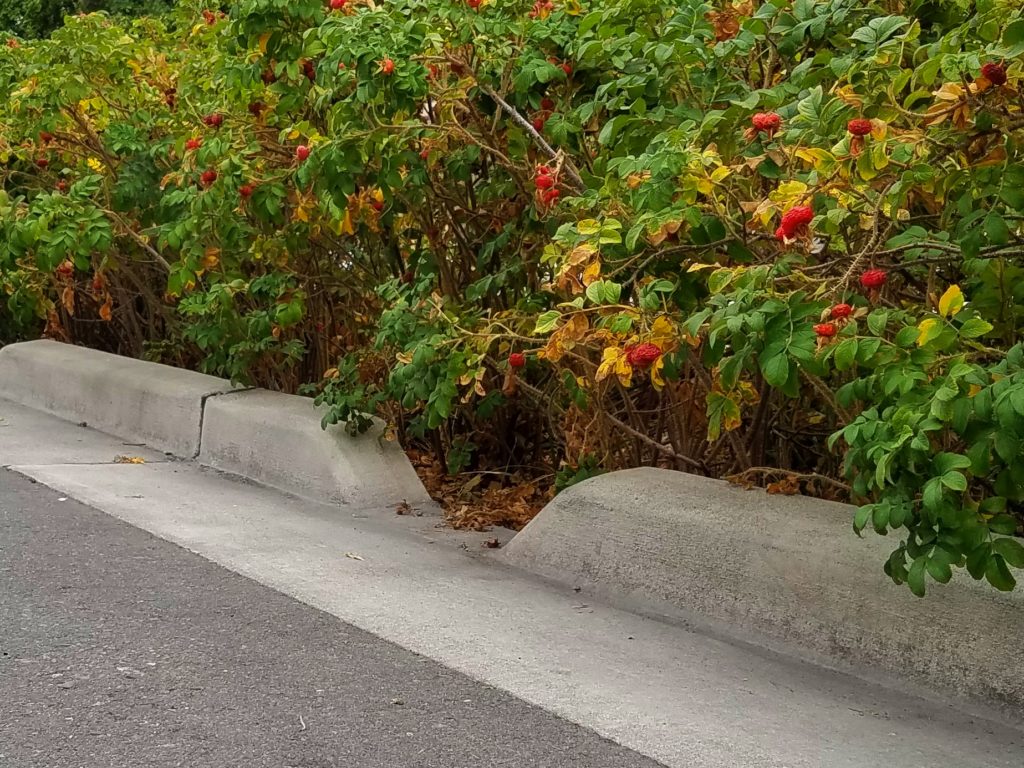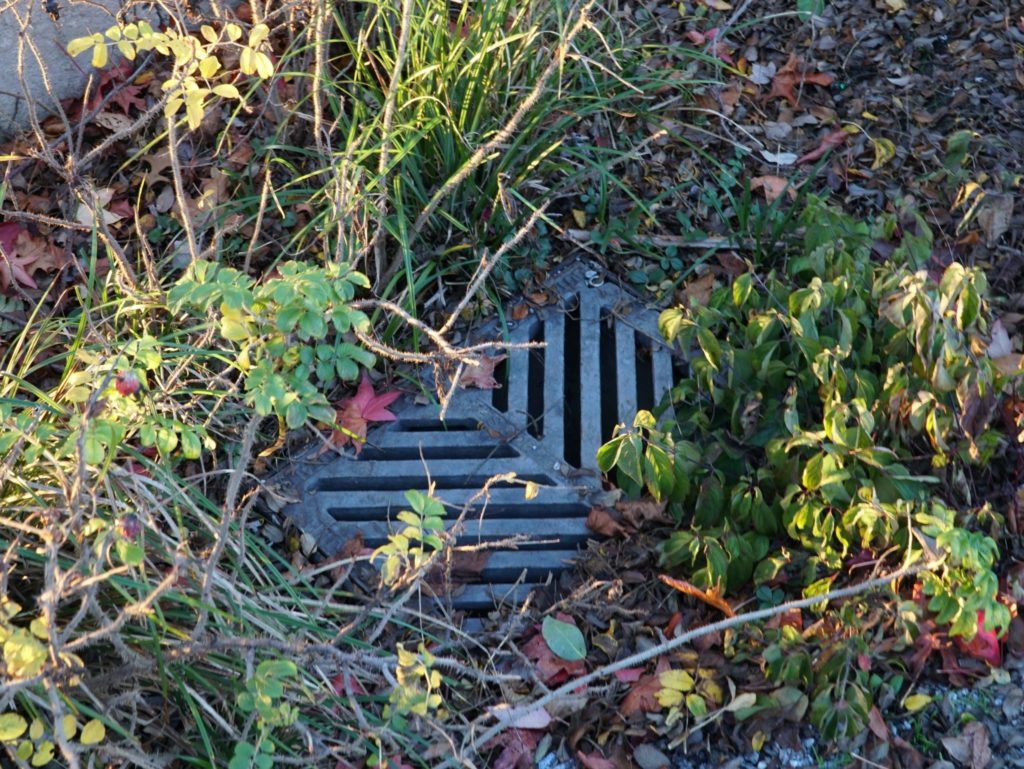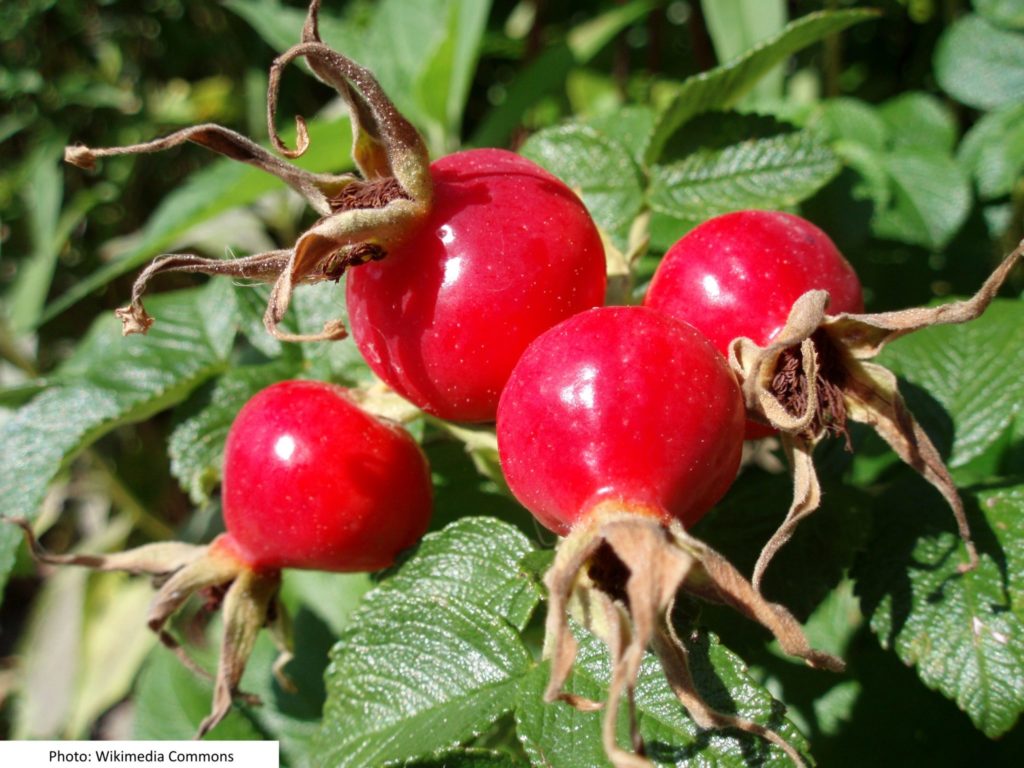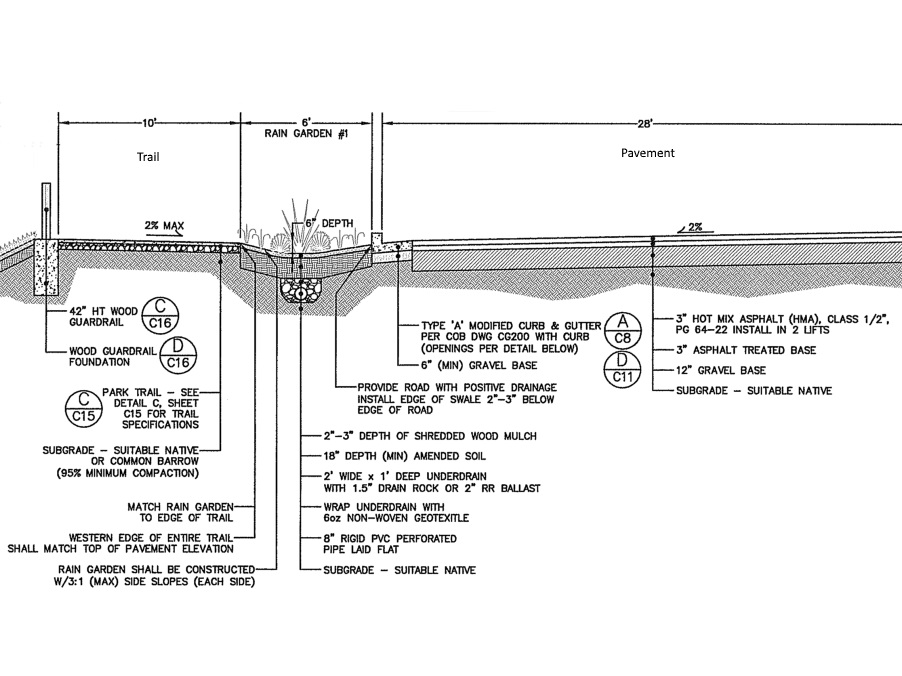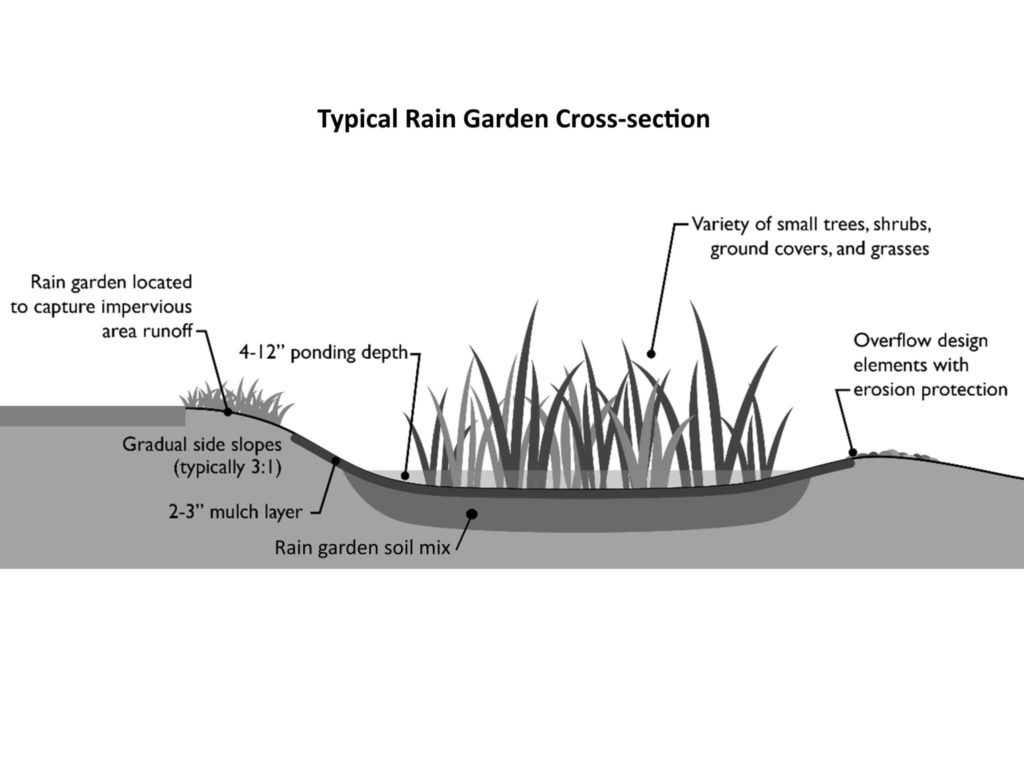Where is this located? It’s at the parking lot at the end of 10th Street and adjacent to the South Bay Trail.
What’s special about this place? While beautifying the area, the wild roses and grass roots keep the soil loose so that water from the parking lot and trail can soak in. It’s possible you’ll see chickadees, towhees, and other small birds foraging for bugs, seeds, and worms in the protection of these plants. Most of the water soaks into the soil. But if there is too much rain, a drain below the soil carries the extra runoff downhill to the 8th Avenue Bioretention Basin. This technique serves a double purpose of providing safe separation of cars in the parking lot from users on the trail.
image gallery
select any photo to see a slideshow
